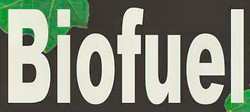No Further Developments Until Fuel Is More Redily
Available
After a six-month practical trial involving biosynthetic fuel,
Lufthansa said this week that it had successfully operated 1,187
biofuel flights between Hamburg and Frankfurt. According to initial
calculations, CO2 emissions were reduced by 1,621 tons. Total
consumption of the biokerosene mix amounted to 1,715
tons.

“Our burnFAIR project went off smoothly and to our fullest
satisfaction. As expected, biofuel proved its worth in daily flight
operations,” confirmed Joachim Buse, Vice President Aviation
Biofuel at Lufthansa.
The highlight of the biofuel trial at Lufthansa will be the
first scheduled transatlantic flight to the United States, planned
for January 12tth. A Boeing 747-400, carrying about 40 tonnes
of a biosynthetic fuel mix, will fly from Frankfurt to Washington.
With this flight alone, Lufthansa expects to reduce CO2 emissions
by 38 tonnes, equivalent to the CO2 emissions of six scheduled
flights between Frankfurt and Berlin.
The aviation industry has undertaken a great deal in terms of
climate protection and has set itself ambitious targets. In line
with IATA’s industry-wide goal, airlines must reduce their
net CO2 emissions by 50 per cent by the year 2050 compared to 2005.
“If we want to protect our climate and thus our future in a
sustainable manner, we need innovative ideas and technologies and
an environmentally friendly alternative to fossil fuels –
particularly in view of the growing demand for mobility
worldwide,” said Christoph Franz, Chairman of the Executive
Board of Deutsche Lufthansa AG.

Biosynthetic kerosene is just as reliable as conventional jet
fuel but the environmental effects are more positive. Thanks to the
higher energy density of biofuel, it has been possible to reduce
the fuel consumption by more than one per cent. Furthermore,
biosynthetic kerosene is free of sulphur and aromatic compounds.
The principle behind biofuel is simple and is based on the carbon
cycle. Plants withdraw CO2 from the atmosphere through
photosynthesis. When aircraft engines burn biofuel, this CO2 is
released back into the atmosphere. Biofuel emits about 50 per cent
less CO2 than conventional fossil fuels.
The the tests will be winding down until biofuels are more
redily available. “As a next step, we will focus on the
suitability, availability, sustainability and certification of raw
materials. But first we must tap into this market. However,
Lufthansa will only continue the practical trial if we are able to
secure the volume of sustainable, certified raw materials required
in order to maintain routine operations,” project manager
Joachim Buse stressed.
A Lufthansa Airbus A321 was used to operate scheduled flights on
the Hamburg-Frankfurt route between July 15th and December 27th
last year. One of the aircraft’s engines was powered by a
50-50 blend of regular fuel and biosynthetic kerosene. The aim of
this long-term trial was to gain experience in the use of biofuel
and collect long-term data. At the same time, the test flight
enables the effects of biofuels on the environment and on the
maintenance and life time of the engines to be examined.
 ANN's Daily Aero-Linx (05.02.24)
ANN's Daily Aero-Linx (05.02.24) ANN's Daily Aero-Term (05.02.24): Touchdown Zone Lighting
ANN's Daily Aero-Term (05.02.24): Touchdown Zone Lighting Aero-News: Quote of the Day (05.02.24)
Aero-News: Quote of the Day (05.02.24) ANN FAQ: Contributing To Aero-TV
ANN FAQ: Contributing To Aero-TV NTSB Final Report: Cirrus Design Corp SR20
NTSB Final Report: Cirrus Design Corp SR20




